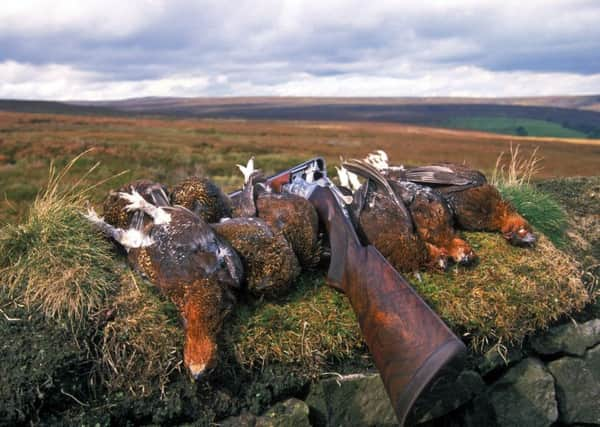Letter: Perspective on moorland management


Habitat management initiatives undertaken by gamekeepers preserve and enhance heather moorland and contribute to the conservation of a range of bird species. Although lapwing, curlew, golden plover, ring ouzel and merlin are in serious decline elsewhere, they can still be found in good numbers on our moors. Most moorland species thrive in a mosaic of different vegetation heights. Merlin often chooses tall heather to nest and special zones are set aside under strict management plans from the government’s nature conservation agency.
The North York Moors have the largest continuous patch of heather moorland in England and Wales and much of it (44,000 hectares) is designated as a Site of Special Scientific Interest, Special Area of Conservation and a Special Protection Area. It was the internationally significant populations of both merlin and golden plover found breeding in the North York Moors that led to the most recent designation.
Advertisement
Hide AdAdvertisement
Hide AdWorking with landowners and farmers in the North York Moors to enhance habitats for waders is one of the objectives in both the National Park Authority’s Local Biodiversity Action Plan and Management Plan. This highest level of wildlife protection is in large part thanks to grouse moor management not despite it.
The Moorland Association has also pledged its continued commitment to the government’s Hen Harrier Action Plan, after RSPB’s recent withdrawal, and our organisation is determined to see more of Britain’s most talked about bird of prey on grouse moors.
Everyone’s knowledge of the benefits of good environmental stewardship has improved over time. It is true that from 1950 to the 1980s ditches were dug into deep peat/blanket bog sites with full Government grants as an incentive to make the boggy ground better for sheep grazing. The environmental impact of these activities is now better understood and such ‘grips’ are being blocked up again to retain the water in the hills. The ongoing work with the Yorkshire Peat Partnership as part of the Pickering ‘Slowing the Flow’ project, alongside normal management practices carried out by estates, ensures these ditches are being blocked in accordance with current best practice.
What happens on our moors is now there for all to see. Open access came into force in 2005 to allow people the new right to access unenclosed land. With access comes responsibility however, and understanding that the countryside is a working, living landscape is vital to protect its future. Unfortunately, this is not always respected therefore high levels of theft and vandalism results in CCTV to both dissuade and help rural crime officers catch perpetrators.
Advertisement
Hide AdAdvertisement
Hide AdWe are concerned by the perception that taxpayers’ money goes towards sustaining grouse shooting. That is not the case. Subsidy is paid for agricultural and environmental outcomes. Bracken and scrub control, peatland restoration and sympathetic grazing levels can all attract public money for delivering public goods.
Grouse moors play a key role in delivering social, economic and environmental benefits. Those who live and work on and around moors are acutely aware of their responsibilities. Quite rightly, high standards of sustainable conservation practice are demanded and we are wholly committed to meeting those challenges successfully.
George Winn-Darley is the North York Moors representative of the Moorland Association.